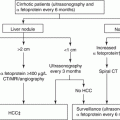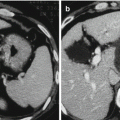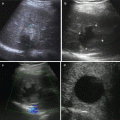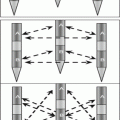© Springer Science+Business Media Dordrecht 2016
Minshan Chen, Yaojun Zhang and Wan Y. Lau (eds.)Radiofrequency Ablation for Small Hepatocellular Carcinoma10.1007/978-94-017-7258-7_44. Initial Clinical Assessment and Patient Selection
(1)
Department of Surgery, Queen Elizabeth Hospital, Hong Kong SAR, China
(2)
Chinese Academy of Sciences, Faculty of Medicine, The Chinese University of Hong Kong, Shatin, New Territories, Hong Kong SAR, China
(3)
Department of Surgery, Pamela Youde Nethersole Eastern Hospital, Hong Kong SAR, China
4.1 Introduction
For many years, partial hepatectomy and liver transplantation have been considered as the only forms of curative treatment for hepatocellular carcinoma (HCC). Unfortunately, only 10–20 % of HCC is resectable. Anatomic location, size or number of lesions, inadequate liver remnant, or comorbid conditions preclude surgery in the majority of patients. Orthotopic liver transplantation can cure some patients with poor liver function due to underlying cirrhosis, but few patients are eligible because of advanced stage of HCC at initial diagnosis and because of scarcity of liver donors, especially in some parts of the world. Currently, radiofrequency ablation (RFA) is commonly used in patients with small HCC confined to the liver, especially when the tumors are unresectable because of poor general condition of the patients or because of compromised liver function. Using RFA as a bridge to liver transplantation results in low treatment morbidity and favorable HCC responses and reduces drop-out rate of patients while on the liver transplant waiting list due to HCC progression. Local ablative therapy now competes with partial hepatectomy and liver transplantation as the primary treatment for patients with small HCC. The application of RFA has a number of potential advantages in patients with HCC. The procedure is relatively safe and well tolerated, and its complication rates in most reported series are low. Data have accumulated to support the safety and effectiveness of RFA in selected patients. To achieve good treatment outcomes, proper clinical assessment and patient selection are important. This chapter introduces the clinical assessment and patient selection for RFA [1].
4.2 Current Indications for RFA
1.
First-line curative treatment for patients with small HCC of less than 5 cm, preferably less than or equal to 3 cm who are not candidates for liver resection or liver transplantation
2.
Bridging therapy before liver transplantation
3.
Alternative curative treatment to surgery for resectable or transplantable HCC less than or equal to 5 cm, or less than three tumors with each tumor less than 3 cm
4.
Treatment of recurrent and unresectable HCC
5.
Supplementary procedure to liver resection in patients with multiple or bilobar HCC
6.
Palliative treatment to control intrahepatic disease
7.
Form of treatment in a patient receiving multidisciplinary approach treatment to enhance the effects of local regional (e.g., transcatheter arterial chemoembolization) or systemic treatment (e.g., sorafenib or systemic chemotherapy)
4.3 Clinical Assessment
RFA can be carried out percutaneously, laparoscopically, or at open surgery. The laparoscopic and open approaches increase the chance of detection of unknown intrahepatic and extrahepatic tumors, as they allow complete abdominal exploration and intraoperative ultrasonic assessment. The additional advantages of open and laparoscopic approaches are accurate placement of electrodes and possible treatment of tumors in percutaneously inaccessible regions of the liver and tumors in close proximity to or invading adjacent organs. The move from open to laparoscopic to percutaneous techniques loses the advantages of the open but gains the advantages of the minimal invasive approach. Tumor size, number of tumors, site of tumors, liver functional reserve, and general condition of patients are also important considerations in the choice of the RFA approach. Absolute contraindications to RFA are uncorrectable coagulability, extensive ascites not correctable with medication, extensive venous tumor thrombi, and poor associated medical condition, which renders the patient not suitable for any form of sedation or anesthesia. The relative contraindications to RFA are poor liver functional reserve and large HCCs. RFA can still be considered in patients with extrahepatic metastasis or with multiple bilobar HCC if the treatment aims at palliation, especially in patients who receive multidisciplinary treatment for HCC. Therefore, a thorough medical history taking, clinical examination, laboratory investigations, and imaging assessment must be performed on a patient to plan for RFA. Particular attention should be paid to check whether the patients are taking any anti-platelet or anti-coagulation drugs. All anti-platelet drugs should be stopped at least 1 week before RFA, and warfarin should be converted to heparin before RFA treatment. All underlying medical diseases should be put under control, and any forms of ascites should be controlled with diuretics. Alcohol should be stopped, and patients with hepatitis-B-related hepatitis should have their HBV-DNA checked. It is our belief that patients who are hepatitis B antigen positive should receive antiviral treatment before RFA. Prophylactic antibiotics are commonly given. It is especially indicated in patients with heart valve disease or who has a cardiac/neurological/surgical implant. Thus, a history of drug sensitivity is also important to determine the appropriate prophylactic antibiotic regimen.
Stay updated, free articles. Join our Telegram channel

Full access? Get Clinical Tree








